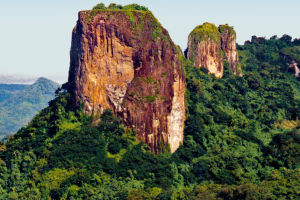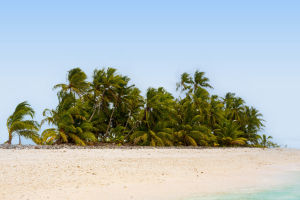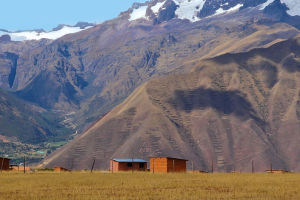For Lykkers who love exploring underwater worlds and vibrant marine life, Palau and Micronesia present an extraordinary opportunity.
Nestled in the northern Pacific Ocean, Palau is a collection of about 200 islands that promise unforgettable diving experiences among some of the richest marine ecosystems on the planet.
Alongside Palau, the lesser-known Micronesian islands offer equally captivating diving and natural exploration options for those ready to venture off the beaten path.
Where Palau and Micronesia Are Located
Palau's Position
Palau lies approximately 650 kilometers southeast of the Philippines in the Pacific Ocean. This remote island group stretches along a 35-kilometer line of stunning limestone formations known as the Rock Islands.
Micronesia's Scope
Micronesia is a vast region made up of many small islands scattered across three million square kilometers of ocean. Its total landmass is smaller than a single large city but offers a wide variety of unique diving spots spread among islands such as Kosrae, Pohnpei, Yap, and Truk (Chuuk).
What to Expect Underwater
Marine Richness of Palau
Palau's reefs sit at the meeting point of three major ocean currents, creating nutrient-rich waters. This abundance supports over 1,500 fish species and around 700 coral and anemone species.
Dive sites feature sheer walls covered in soft corals, giant sea fans, and schools of vibrant reef fish. Large pelagic species such as sharks and manta rays are frequently encountered.
Iconic Dive Sites in Palau
- Rock Islands: These emerald mushroom-shaped islands rise dramatically from turquoise waters. The surrounding reefs teem with marine life, with caves, underwater arches, and white sand beaches for rest between dives.
- Blue Hole: A group of four deep holes in the reef merging into a large underwater chamber filled with diverse coral formations.
- Ngemelis Wall: A vertical drop of about 300 meters showcasing colorful sponges, black coral trees, and large sea fans.
- Blue Corner: The most famous dive spot, known for dense schools of fish, sharks, and barracudas.
- Jellyfish Lake: A marine lake famous for its harmless golden jellyfish that appear to dance in unison.
Historical Dive Sites at Peleliu
Peleliu Island offers dramatic underwater landscapes with deep walls, abundant sharks, turtles, and gorgonian corals. White Beach and BloodyBeach are ideal for snorkeling.
Diving Highlights in Micronesia
- Kosrae: A mountainous island with healthy reefs, waterfalls, mangrove kayaking, and ancient stone village remains.
- Pohnpei: Known for lush landscapes and diverse marine life, including sharks, barracudas, and manta rays, with plenty of lagoon and pass dives.
- Yap: Famous for manta rays, sharks, and unique giant stone coins. Offers excellent macro diving as well.
- Truk Lagoon: It holds the world's largest concentration of shipwrecks, now covered in coral and serving as a habitat for vibrant marine life.
How to Get There and Travel Options
Access to Palau
Palau can be reached by air, with flights arriving at Koror International Airport. Once there, visitors can explore the islands by boat or take scenic flights for aerial views of the Rock Islands.
Cruises and Liveaboards
Specialized diving cruises, such as those offered by the Palau Aggressor II and Rock Island Aggressor, provide comfortable accommodations on 35-meter boats with private cabins, air conditioning, and communal dining and relaxation areas. These cruises typically last 7 to 10 nights, offering access to the best dive sites around Palau.
Travel in Micronesia
Reaching the more remote Micronesian islands requires planning and often multiple flights or boat trips. Resorts like Nautilus Resort (Kosrae), Mangrove Resort (Pohnpei), and Manta Ray Bay Resort (Yap) offer excellent bases for diving excursions. Liveaboard cruises also operate around Truk Lagoon.
Visiting Details: Seasons, Costs, and Timings
Best Time to Dive
Diving is possible throughout the year. The region experiences a wet season from May to September, and a dry season for the remainder of the year. Even during the dry season, occasional rain occurs, typically about one day per week.
Water temperatures remain comfortable year-round between 28 and 30 degrees Celsius.
Entry and Access Costs
Many dive sites require permits, with fees varying depending on location and the operator. Day trips, snorkeling tours, and diving packages can be booked through local resorts or dive operators. Liveaboard cruises offer an all-inclusive price covering accommodation, meals, and multiple daily dives.
Opening Hours
Most dive centers and resorts operate daily, coordinating dives around weather and tides. Jellyfish Lake is open for daytime visits but closed in the evenings to protect the jellyfish population.
What to See and Do Beyond Diving
Island Exploration
Visitors can explore white sand beaches, hidden lagoons, caves, and forested hiking trails on Palau and Micronesian islands.
Cultural and Historical Sites
Besides underwater attractions, Peleliu offers historical sites such as old forts and monuments, while Yap is notable for its stone money traditions.
Other Activities
Kayaking through mangrove forests, snorkeling on vibrant reefs, and taking scenic flights over the Rock Islands are popular activities for travelers seeking variety beyond diving.
Final Words
Palau and the Micronesian islands stand out as premier diving destinations, offering Lykkers extraordinary underwater biodiversity, stunning natural landscapes, and unique cultural experiences. With warm waters, clear visibility, and a range of dive sites from coral walls to historic wrecks, this region invites adventure and exploration at every turn.
Whether on a liveaboard cruise or staying in a local resort, the wonders of Palau and Micronesia provide unforgettable moments beneath the waves and beyond. Planning a visit here guarantees a remarkable and vibrant journey into one of the world's most pristine marine environments.


